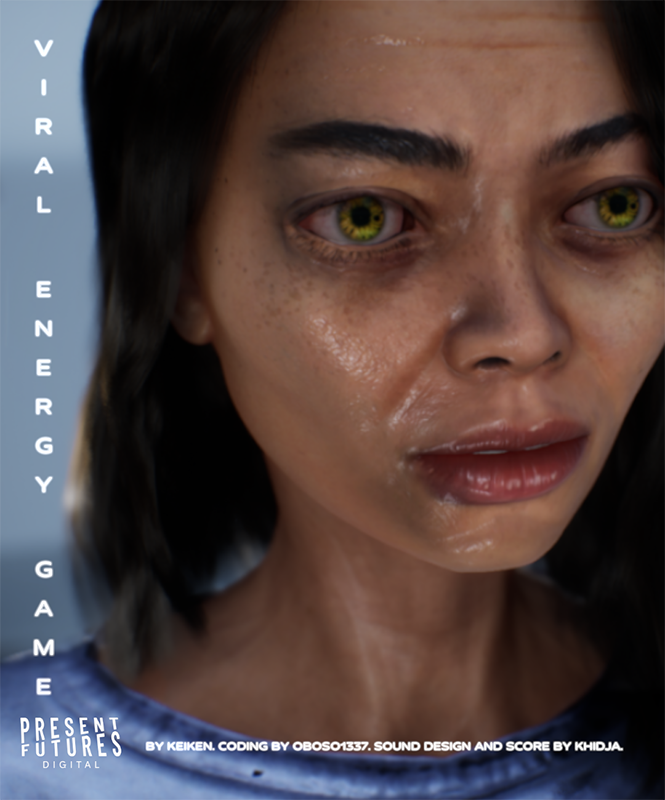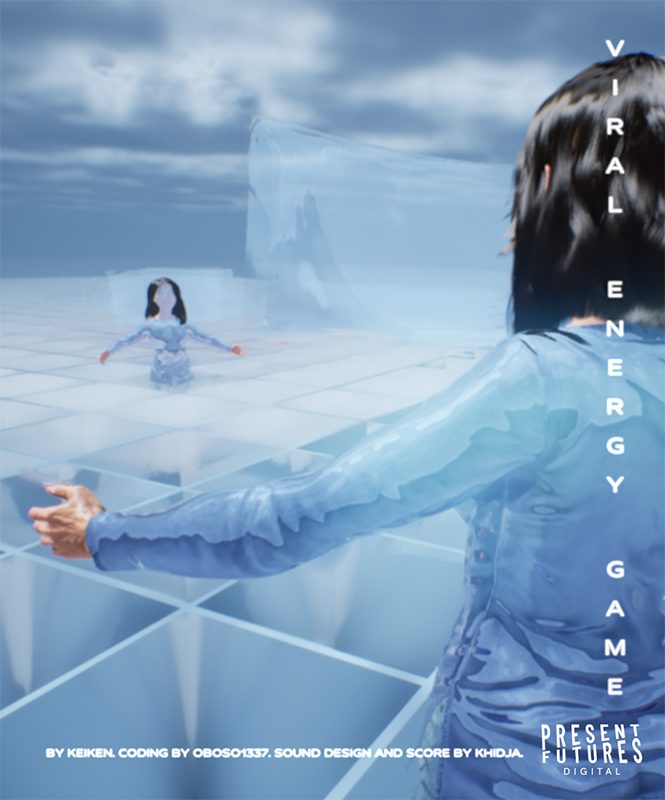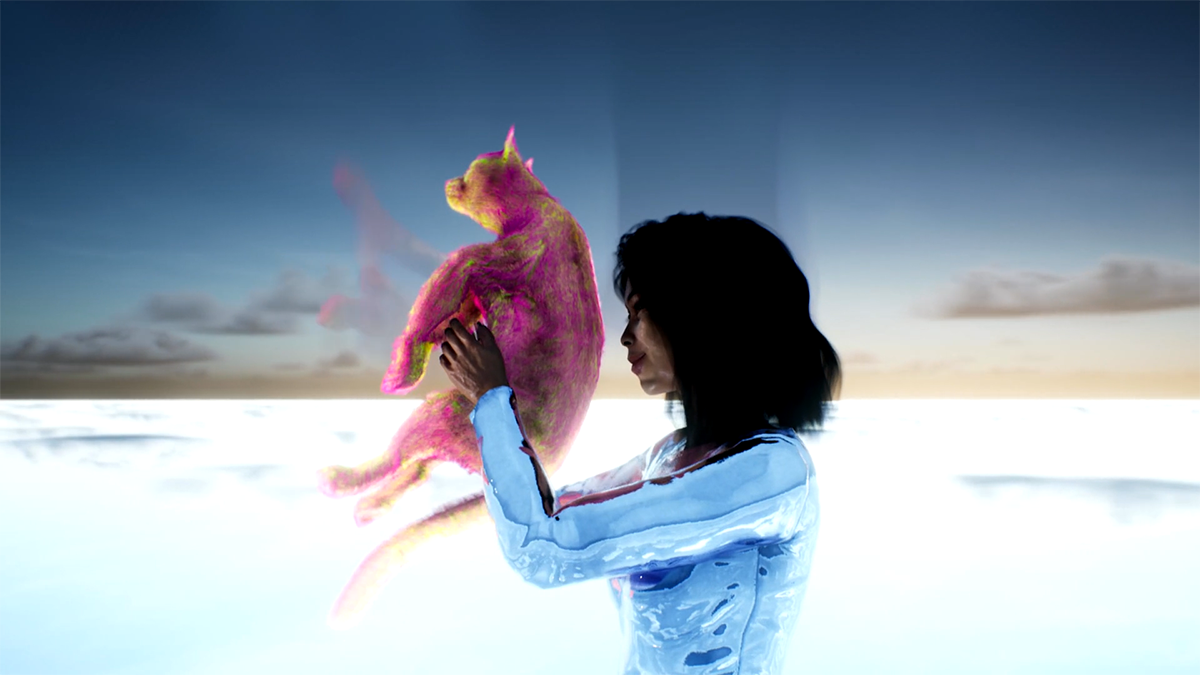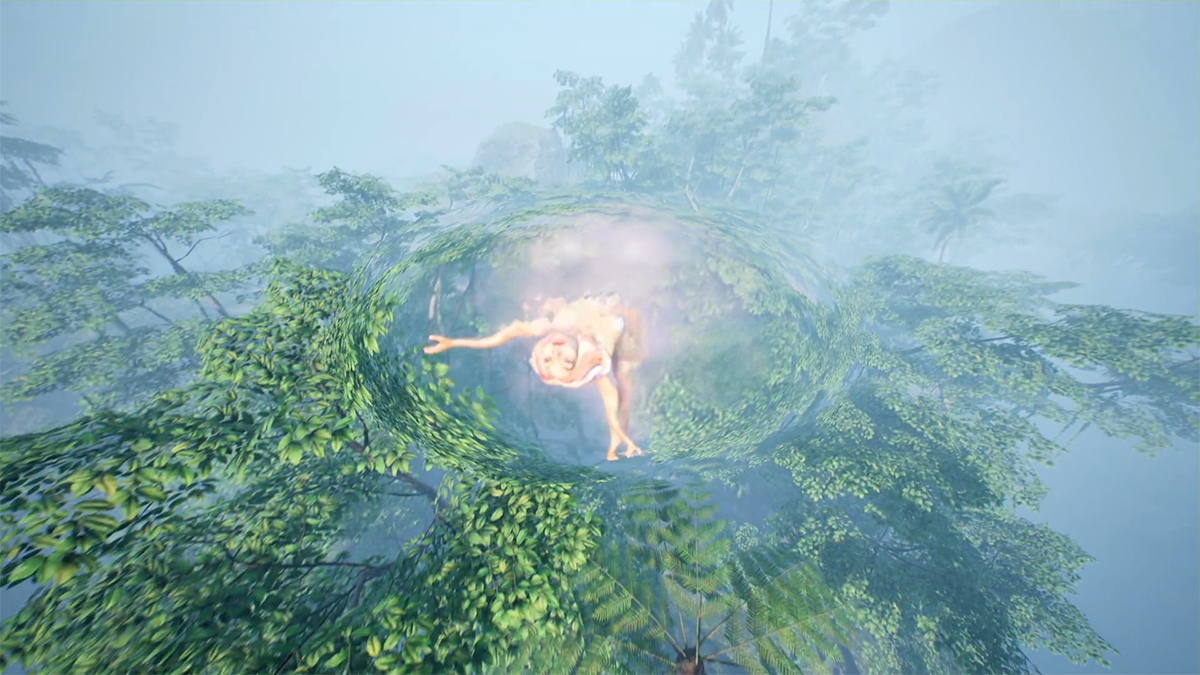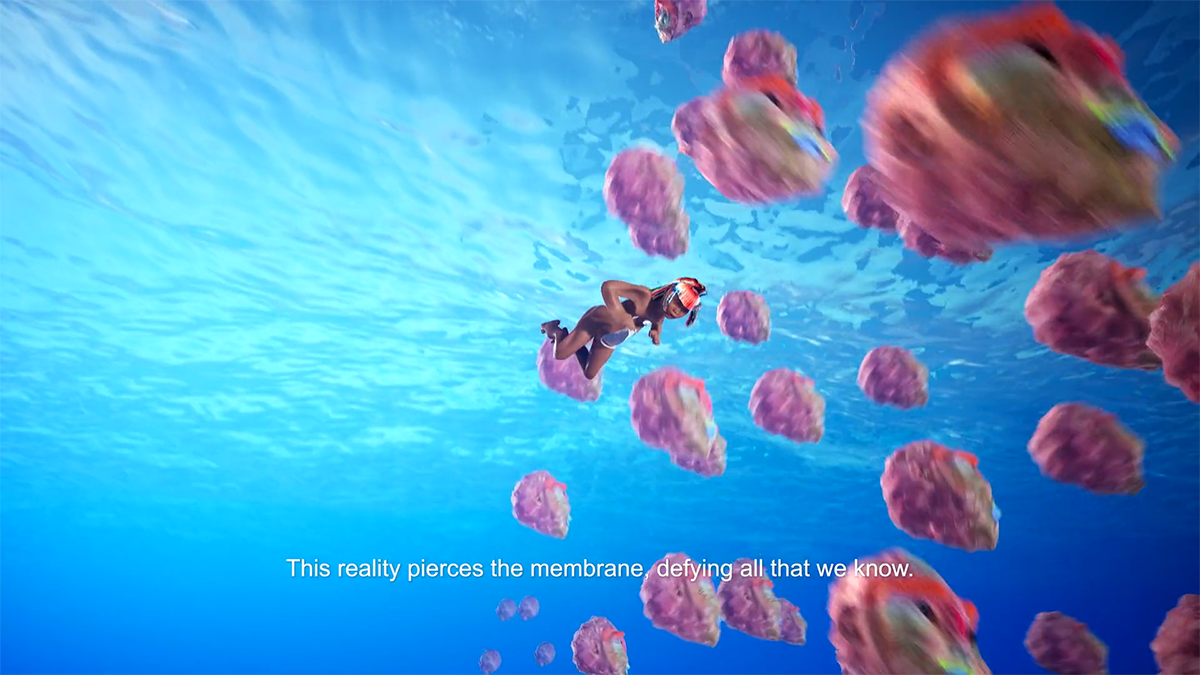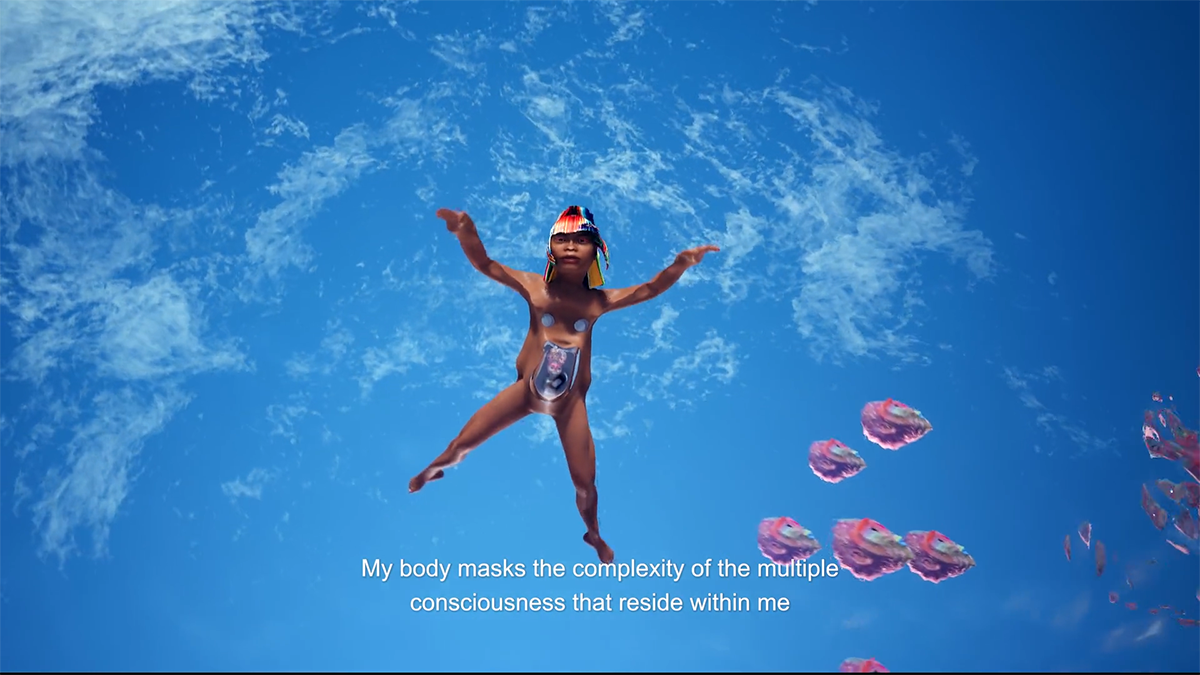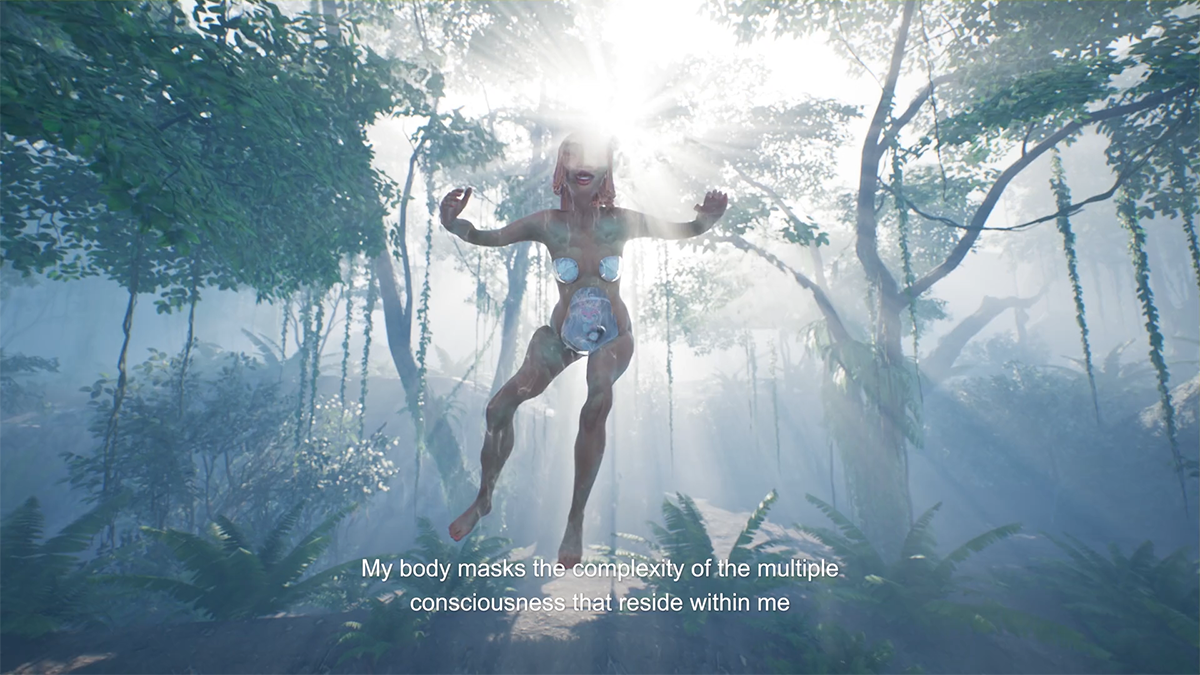Seconds into Keiken’s interactive game VIRAL ENERGY, released February this year, the player encounters the game’s first pop-up, punctually followed by another. As the instructions make clear, the pop-ups are an essential in-game feature: the more one interacts with them, the closer one is to completing the game. They’re harmless at first, the player listening to the monologue of their avatar, ME, who, in her yearning for connection, manifests a bespoke digital twin: an amorphous blob named MI.
Within minutes, however, the pop-ups become increasingly invasive, flooding the screen in nerve-wracking transmission. Bearing the imperatives “HOLD ME,” “TOUCH ME,” and “PAY ATTENTION,” the messages contained within them barrage ME, doubling and tripling in volume with every frantic click of the user. Concurrent to all this hyper-documented Internet toxicity is MI’s development. As more of ME gets downloaded with each action, the digital twin does indeed take on a further likeness – appearing next as a child, then, finally, as an ageless double, whose complexion is a sharp contrast to ME’s visibly strained demeanor. At the end of the five-minute gameplay, the camera view launches skyward as ME denounces, gently, her digital other, right as the last pop-up emerges into view, introducing ALL: “A new anti-virus technology that helps everyone to have more awareness on self-centered technologies that produce loneliness.”
We encounter ME and ALL again in Dream Time Life Simulation, the third episode of Keiken’s spanning speculative narrative, ‘The Life Game.’ Set in a future Metaverse following the events after VIRAL ENERGY and its sequel, Battle of Reality, ME is transported high above a tropical landscape, overlooking the fog encompassing the jungle below. There, with ALL, ME discovers the full, emancipatory capacities the decentralized Metaverse allows. Fittingly, the jungle, Keiken explains, is patterned after the state of Veracruz, Mexico, the motherland of one of the collaborative practice’s co-founders, Tanya Cruz, who herself bears a striking resemblance to ME. “The haziness of it, the fog, it situates you in that place of knowing and not knowing,” Tanya explains. “This is something Tanny and I connect with very much,” continues Hana Omori, who, along with Isabel Ramos, make up the remaining 2/3 of Keiken. “Though Tanny is Mexican-born, she grew up in the rural area of Cornwall, [England] as I did. It’s not very diverse at all.”
Like Tanya, Hana and Isabel come from diasporic backgrounds. This experience of dislocation is one feeling by which Keiken connects with one another, and with the people they frequently collaborate with, such as performance artist Sakeema Crook. “As you grow up in the country, you don’t know which of it you can claim as your own, so you identify more with your missing culture. But as you get older, you begin to question which of it you can claim, too.”
Veracruz, too, has a complicated history. During its colonial period under Spain, Veracruz was the main port of entry for immigrants and, by the 1600s, slaves. Though noted today for its high concentration of mixed and indigenous peoples, the number is dwindling. When ME activates ALL in Dream Time Life Simulation, she meets two avatars, in a far different likeness from herself: MA and MX. Through MA, ME unlocks her meta-thinking, which allows the character to subvert her reality directly by tapping into a part of the metaverse, “the sort of world one needs within one’s lifetime,” Keiken adds. The world MA portals into is ‘The Watering Years,’ where different past consciousnesses – their memories and wisdom – inherent to the motherland populate the epoch’s vast, oceanic expanse. The fluid connections that occur exceed the limits of MA’s body; schools of fish with human facial features swim in uniform in the background; the very womb of MA houses a being of several heads. Toward the film’s conclusion, the language switches from English to Mexican-Spanish as the camera cuts between MA and MX, who speak as if their minds are completely linked.
“That’s what the Internet is. It’s an act of nature, a meeting of minds,” says Keiken. Similarly, this cross-dimensional collaborative acts as if they’re one entity, often catching themselves completing each other’s sentences. Recalling their first major work together, Honey, I’m Data (2018), they explain that this gamified performance piece that utilized biometrics took three years to accomplish. Like many of their works, Keiken does it from the ground up: from conceptualizing the piece to writing its proposal for a grant, learning the skills necessary to pull it off, and finding similar minds to collaborate with for the endeavor. “As we were friends fresh out of Uni, we were used to writing dissertations. But [through writing the grant,] it was like we wrote a collective one. All the individual points of research suddenly became more fleshed out by all the other avenues of research of everyone else.”
The time between Honey, I’m Data and their beginnings as a collaborative in 2015 had much to do with aligning themselves with one another. “When we started, we didn’t know yet what direction or mediums to take, so, on our very first meeting, we drew a spider diagram of all the things that connected us to one another — and it was a very good mind map. We found that it was the idea of experience, whether that meant consciousness or the nature of experience or pushing the boundaries of experiencing artworks. It’s how we arrived at our name, which translates to ‘experience’ from Japanese.”
In Keiken’s running body of works, present reality is no longer an either/or between the physical and virtual but in the intersections of the two that provide a full, immersive experience, a truth. Their cornerstone film, Feel My Metaverse (2019), employed facial scanning for an accurate representation of the characters’ bodies. “We say often that our method is world-building,” Keiken adds, “But in the metaverse, the speculative narratives go further. We’re unburdened by physical restrictions. More than a space for us to explore, it’s a place we become the architects of and build with others. These collaborations we learn from, there’s no claim to ownership. There’s no sense of overprotection in what you’re doing, so the approach has this healthy distance, in a way. Here is a safe space we can challenge belief systems and explore community experiences shared by digital identities.” Here, Hana Omori enunciates, “And that’s basically wisdom. And I get to experience that and connect to that wisdom that I wouldn’t have found by myself.”
“And like, we also just love working with one another.” Keiken laughs.
Keiken's Dream Time Life Simulation continues to be up for view at the Art Fair Philippines website's Film portal until May 15. Minted NFT editions of their work will be up for auction with Daata today, with whom they will also be at a talk with alongside their fellow fair exhibitors. For the talk, click here to register. For the auction, click here.

.png)
